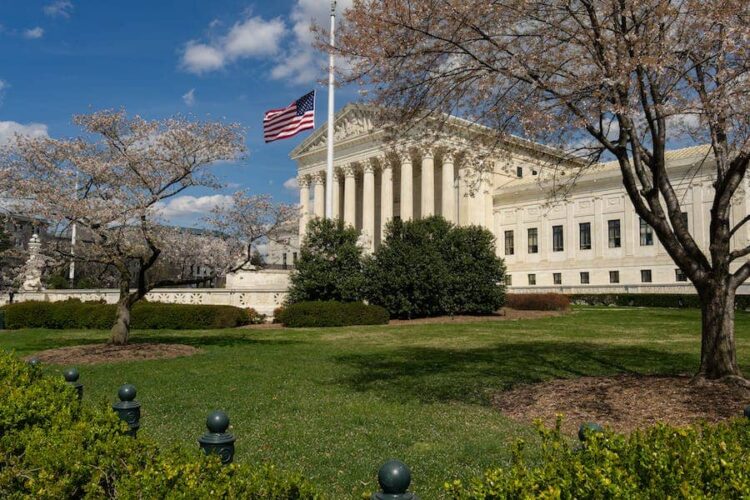In the annals of American legal history, a pivotal question emerges: Why did the Supreme Court expand the incorporation of the Bill of Rights? This query delves into a significant juncture in constitutional interpretation, tracing back to the mid-20th century when the Court embarked on a transformative journey.
The expansion aimed to ensure that the fundamental rights enshrined in the Constitution’s Bill of Rights were not only applicable to federal actions but also extended to the states. This exploration unravels the driving forces, legal precedents, and societal implications that spurred the Court’s decision to broaden the reach of these fundamental protections.
Why Did The Supreme Court Expand The Incorporation Of The Bill Of Rights?
Yes, you can be notified of a lawsuit by phone. Legal notices, including lawsuits, can be delivered via phone calls, although formal written notices are more common.
Unraveling The Epic Journey Of “Incorporate Or Not To Incorporate”
In a legal theater where constitutional principles take center stage, we delve into the captivating narrative of the Supreme Court’s expansion of the Bill of Rights incorporation. The mid-20th century marks the backdrop for this transformation, as the Court ventures to answer, “Why did the Supreme Court expand the incorporation of the Bill of Rights?” This watershed moment unravels a storyline where constitutional norms clash, and the Court emerges as the protagonist.
The journey unfolds with pivotal cases like Gitlow v. New York, a prelude to the sweeping evolution ahead. Legal luminaries, including Gideon v. Wainwright and Miranda v. Arizona, make their entrance, reshaping the legal landscape. Guided by the incorporation doctrine and the 14th Amendment’s Due Process Clause, the Court selectively brings fundamental rights within the grasp of state jurisdictions, harmonizing the application of the Bill of Rights.
As the curtain falls, states find themselves navigating uncharted legal waters, balancing sovereignty with the demands of a unified constitutional vision. Amidst the applause and debates, the Supreme Court’s expansion of incorporation stands as a testament to the dynamic nature of constitutional interpretation, shaping the foundation of rights for generations to come.
Evolution Of Legal Precedents
- Precedents Set The Stage: The Bill of Rights incorporation was influenced by pivotal cases like Gitlow v. New York, Gideon v. Wainwright, and Miranda v. Arizona, shaping the legal narrative.
- Selective Incorporation: The Court’s strategy involves selectively incorporating rights through the 14th Amendment’s Due Process Clause, allowing gradual expansion of rights and avoiding chaos in state legal systems.
- Nationalization Of Rights: The incorporation doctrine has transformed the legal landscape, bringing shared values and a more cohesive understanding of justice, transcending state borders, and fostering national identity.
- Expanding Protections: The Court, in a legal drama, expands incorporation rights, granting freedom of speech and protecting citizens from unreasonable searches and seizures, forming a narrative quilt.
Key Factors Behind Expansion
Ensuring Consistency: The Bill of Rights was expanded to address legal disparities across states, ensuring equal rights to fair trials and press freedom and acting as a constitutional seamstress, stitching together a cohesive legal fabric.
Preserving Fundamental Liberties: The Court, in a tumultuous legal environment, acted as a protective barrier, shielding essential liberties from potential dilution by state governments.
Promoting Justice: The expansion of incorporation in the legal realm aimed to balance the scales of justice, due process, and equality across state lines, serving as a beacon for impartiality and fairness.
National Identity: The Court, in a diverse nation, emphasized the importance of a shared narrative by broadening the Bill of Rights, weaving experiences from various states into a single tapestry.
Securing Generational Relevance: The Court’s incorporation expansion aimed to prevent Constitution obsolescence, ensuring its relevance and embracing its forward-thinking role in safeguarding liberty and justice principles for future generations.
Balancing Federalism: The Court balanced federalism with constitutional rights, preserving states’ distinct identities and roles and ensuring that the harmony of rights did not overpower individual states’ autonomy.
Fostering Civic Participation: The Constitution’s expansion of incorporation emphasized civic engagement, recognizing it as a living contract between government and the governed, empowering citizens to shape their legal landscape.
Navigating Complex Legal Terrain
Implications For States
The Court’s expansion of the Bill of Rights led to a significant legal shift in state governments, requiring them to adapt their legal mechanisms to align with the new rights. This included changes in due process procedures and evidence rules, affecting every corner of the criminal justice system. States had to reset their legal compass to navigate this new territory while maintaining the fundamental principles of justice.
Judicial Prudence
The Court played a crucial role in legal transformation, strategically selecting rights to incorporate and balancing justice by respecting states’ authority while safeguarding constitutional integrity. This involved a delicate assessment of rights that uphold individual liberties while fostering harmonious coexistence between federal and state jurisdictions. The Court ensured each incorporation was a testament to its commitment to balanced governance.
Public Discourse
The Court’s decisions to expand the Bill of Rights sparked public discourse, influencing constitutional philosophy, federalism, and the balance between state and federal powers. The nation became a hub of discussions, with legal scholars, policymakers, and citizens discussing the judiciary’s role in shaping individual liberties. These rulings sparked contemplation about the intricacies of the American legal system and the larger governance architecture that defined the nation’s ethos.
Impacts And Controversies
- The Power of Uniformity: Incorporation promoted unity among states and citizens, reinforcing shared rights and transcending regional boundaries.
- Legal Dynamism: Each incorporated right added dynamism to the Constitution, making it responsive to societal shifts.
- Balancing State Autonomy: Incorporation sparked debates about balancing states’ rights with a centralized interpretation of the Constitution.
- Expanding Individual Protections: Incorporation extended fundamental protections nationwide, preventing states from infringing upon rights.
- Judicial Authority: Court decisions enhanced the judiciary’s role as guardian of constitutional rights, solidifying its position.
- The catalyst for Civic Engagement: Debates spurred citizen involvement in constitutional matters, creating a more informed citizenry.
- Interplay of Federal and State Authority: Controversies highlighted the intricate dance between federal and state powers.
- Preservation of Original Intent: Some argue incorporation maintains framers’ intentions, ensuring consistent rights.
- Guarding Against Tyranny: Supporters see incorporation as a defense against state abuses, protecting individual rights.
- Adapting to Cultural Shifts: Incorporation’s flexibility accommodated evolving societal norms, fostering a just legal landscape.
Conclusion
In the ongoing saga of American jurisprudence, the expansion of the Bill of Rights incorporation stands as a testament to the Supreme Court’s role in shaping the nation’s legal fabric. This evolution continues to influence how the Constitution safeguards individual rights across the United States.
FAQ’s
Q: Can States Still Enforce Their Own Laws Despite Incorporation?
A: Yes, states retain authority to enact and enforce laws, but they must ensure they align with incorporated constitutional rights.
Q: Did Incorporation Lead To A Total Convergence Of State Laws?
A: No, while incorporation harmonizes certain rights, states can maintain varying laws as long as they respect incorporated rights.
Q: Can States Challenge The Supreme Court’s Incorporation Decisions?
A: States can challenge, but the Court’s decisions set legal precedents that guide future cases.
Q: How Did Incorporation Impact Law Enforcement Practices?
A: Incorporation imposed stricter standards on law enforcement, safeguarding individuals’ rights during criminal investigations.
Q: Are All Rights Equally Incorporated?
A: No, the Court incorporated rights on a case-by-case basis, focusing on those deemed fundamental to justice and liberty.










